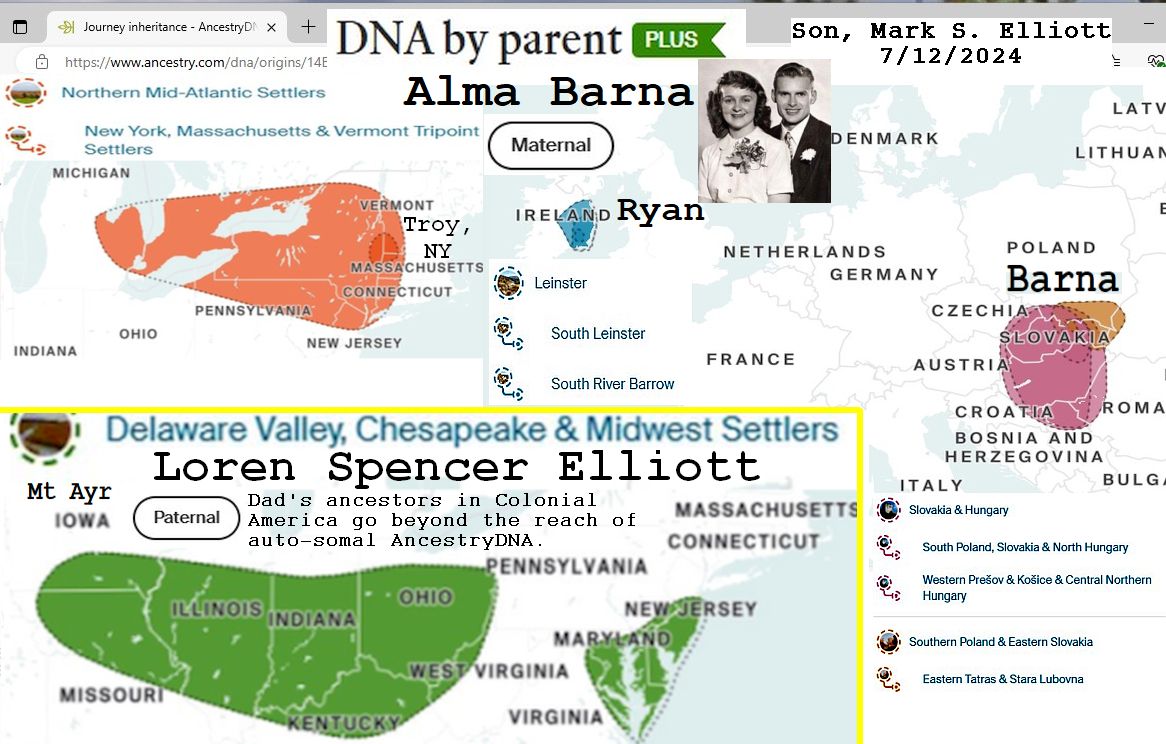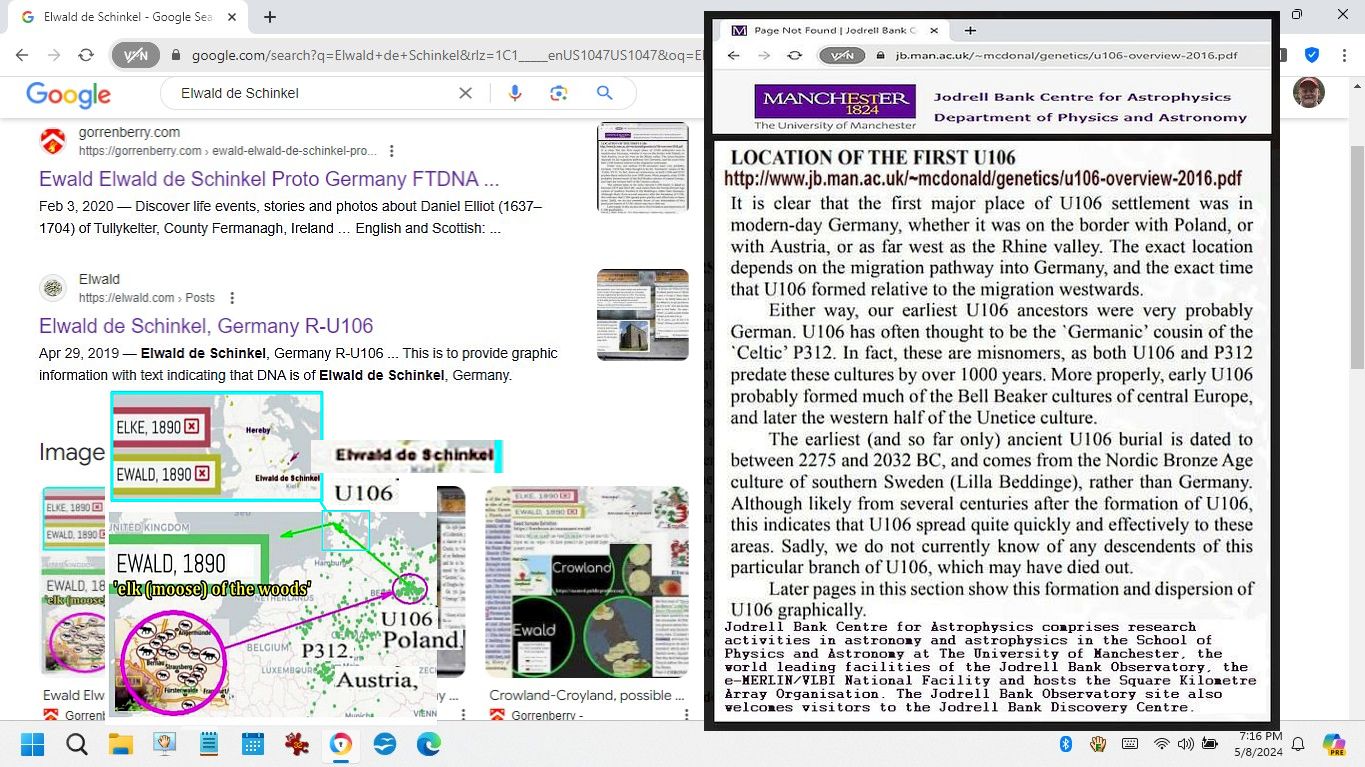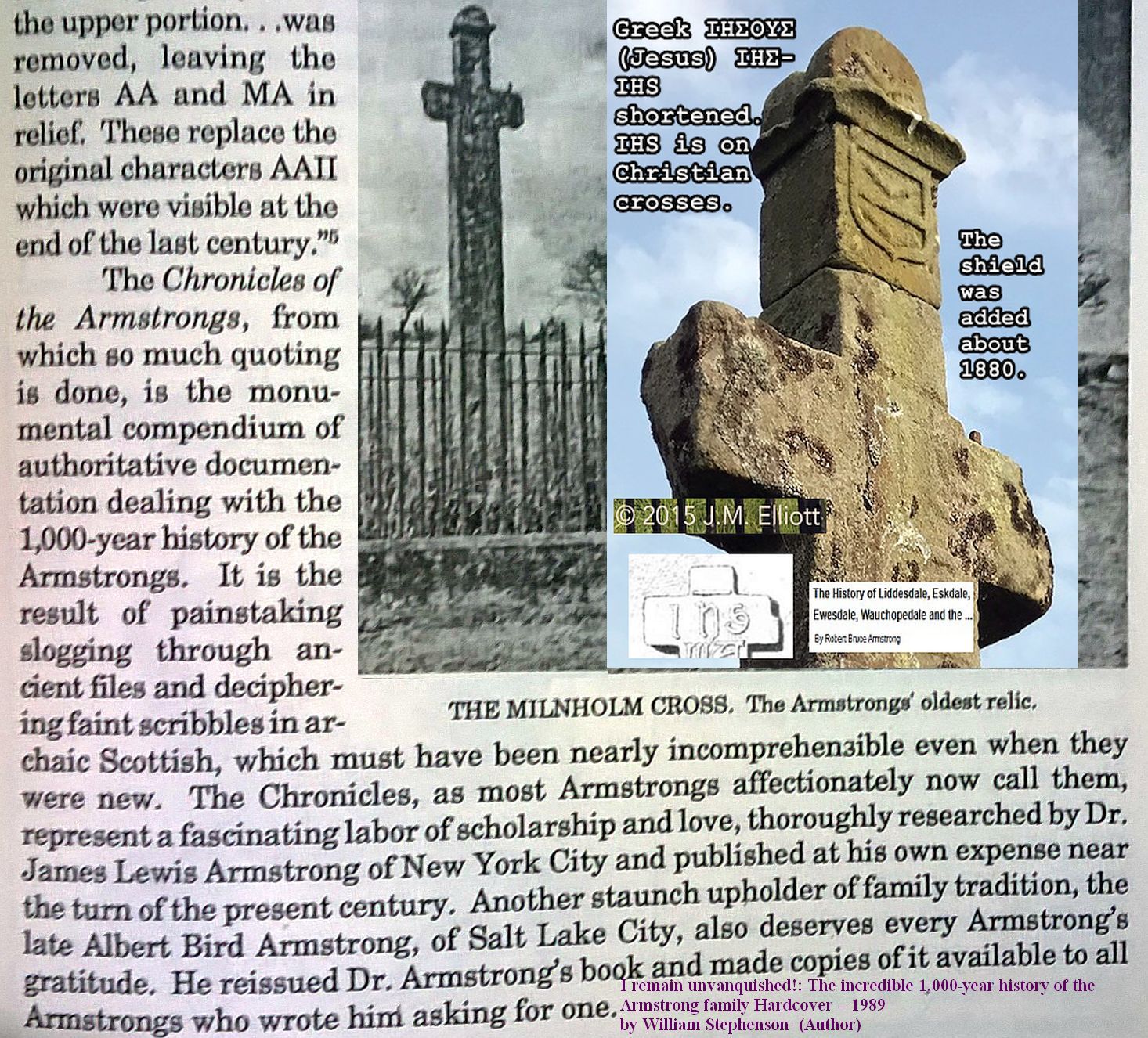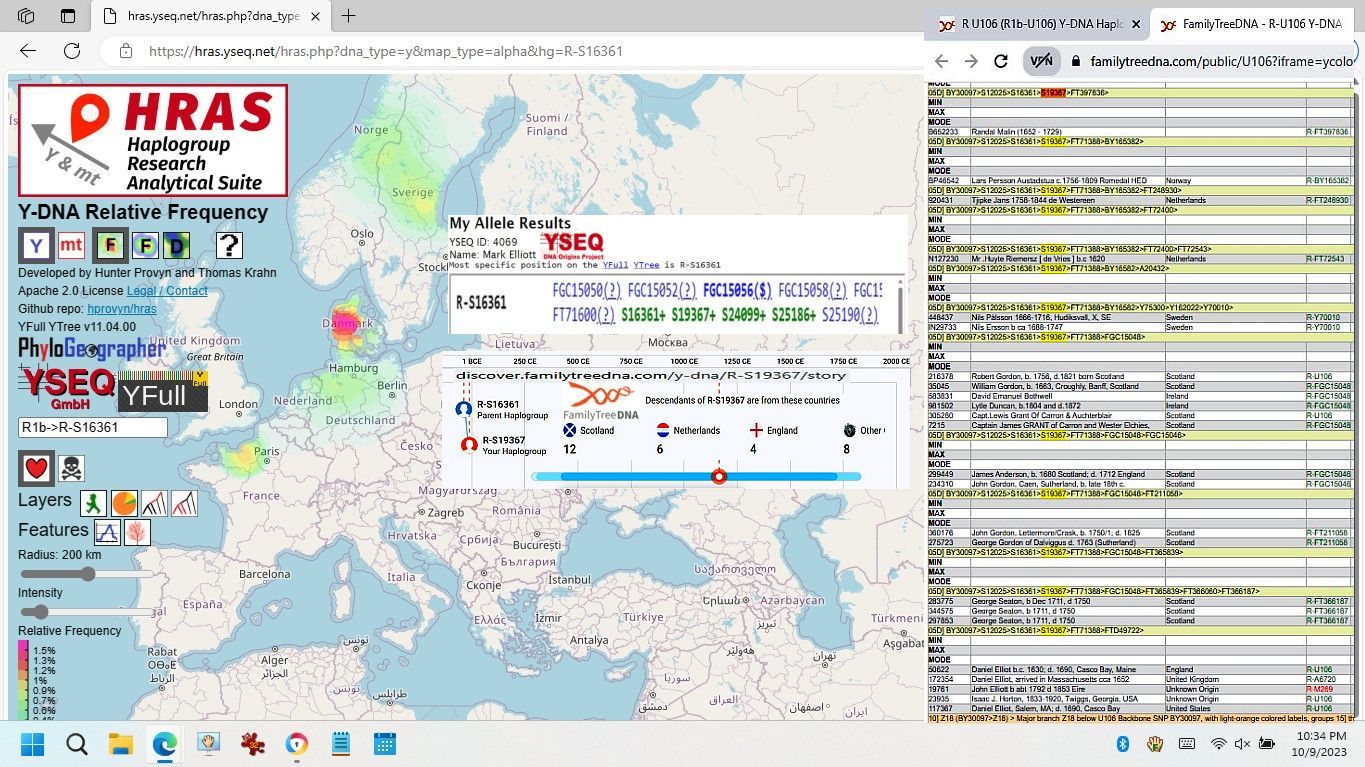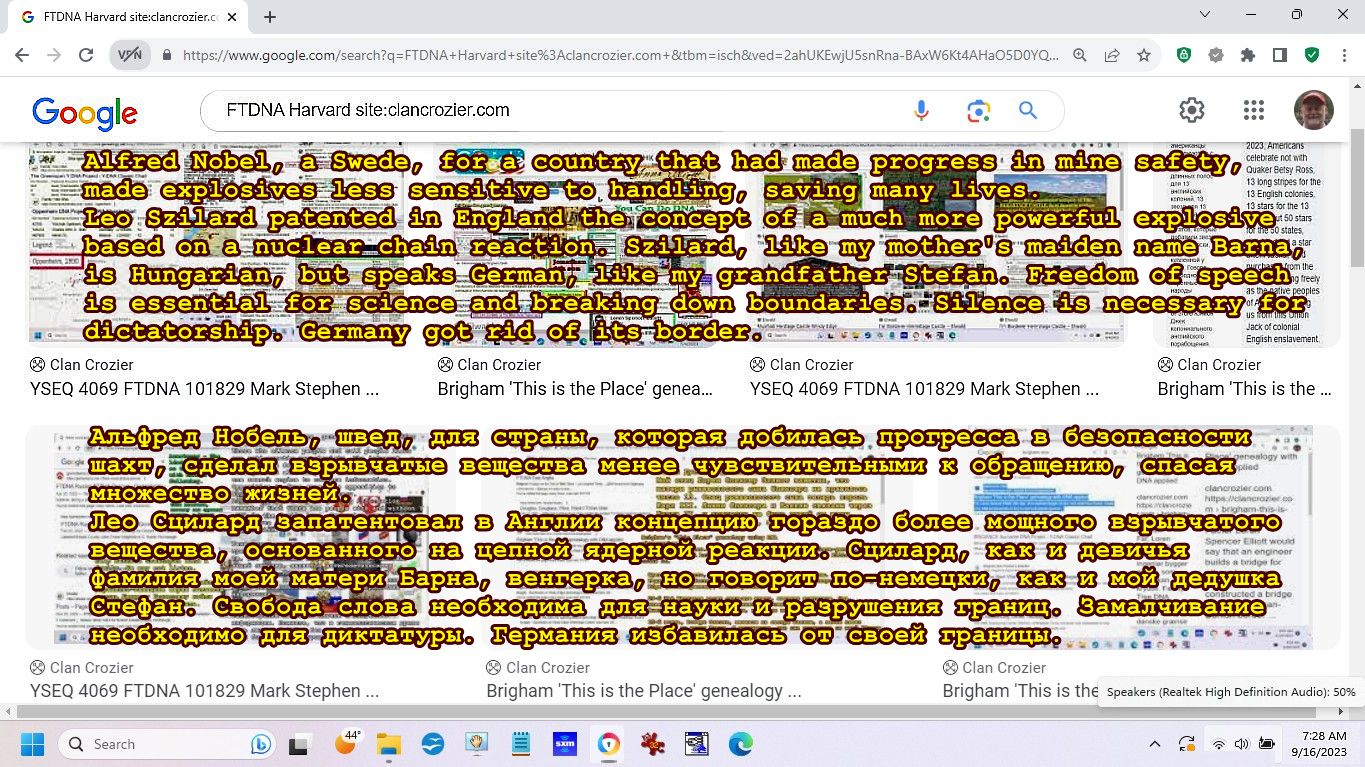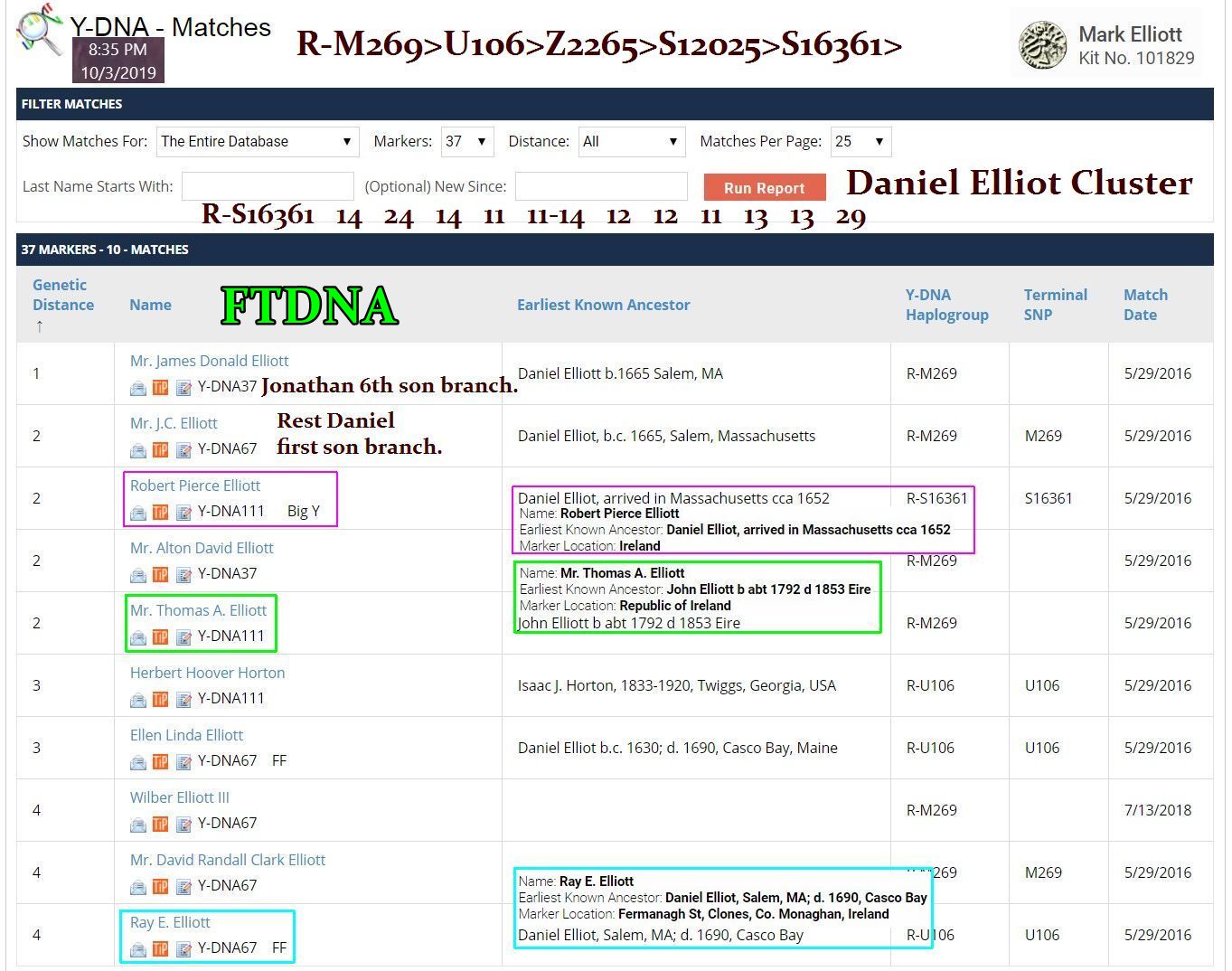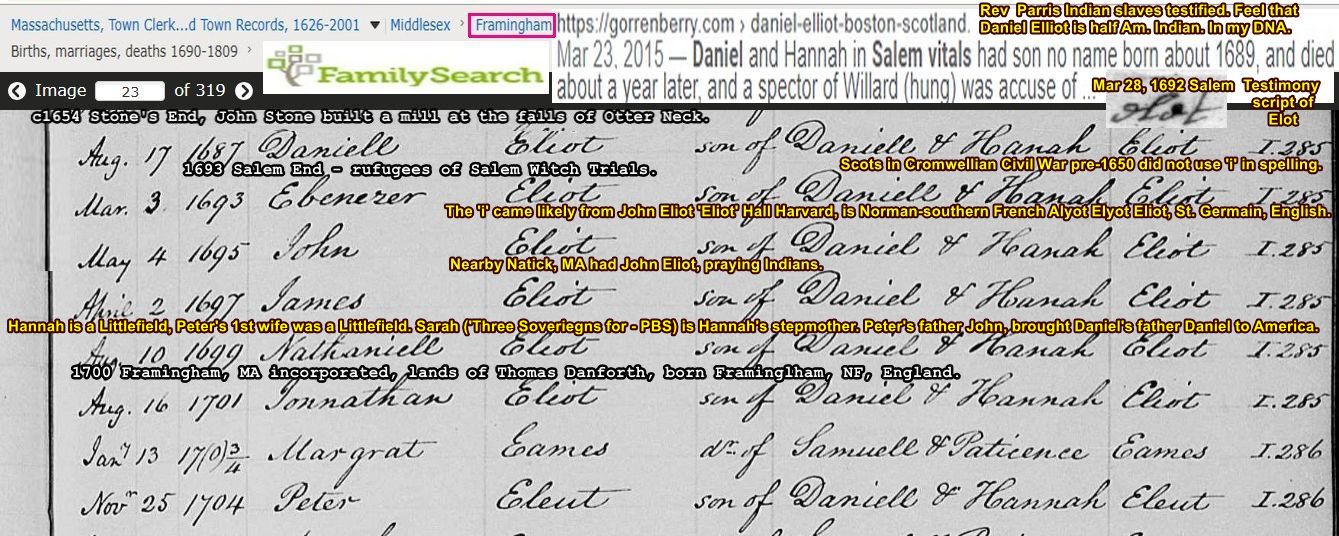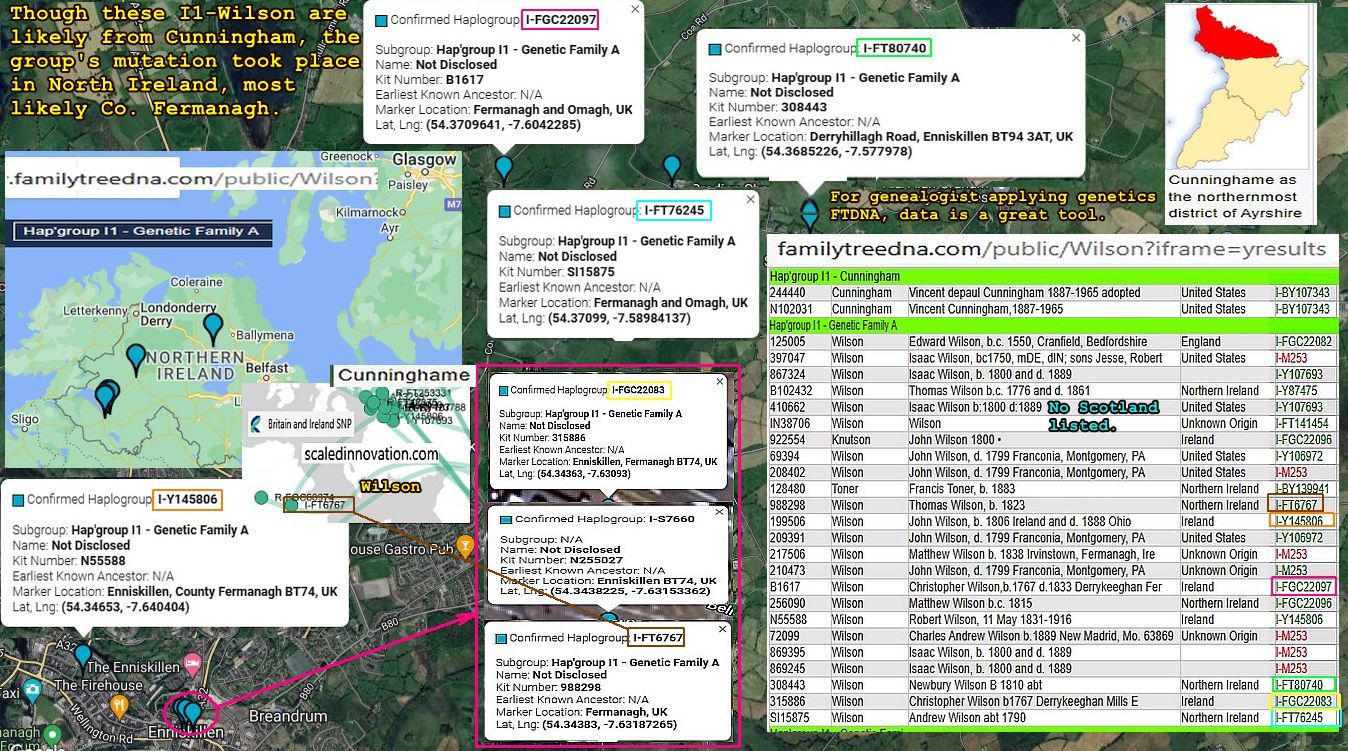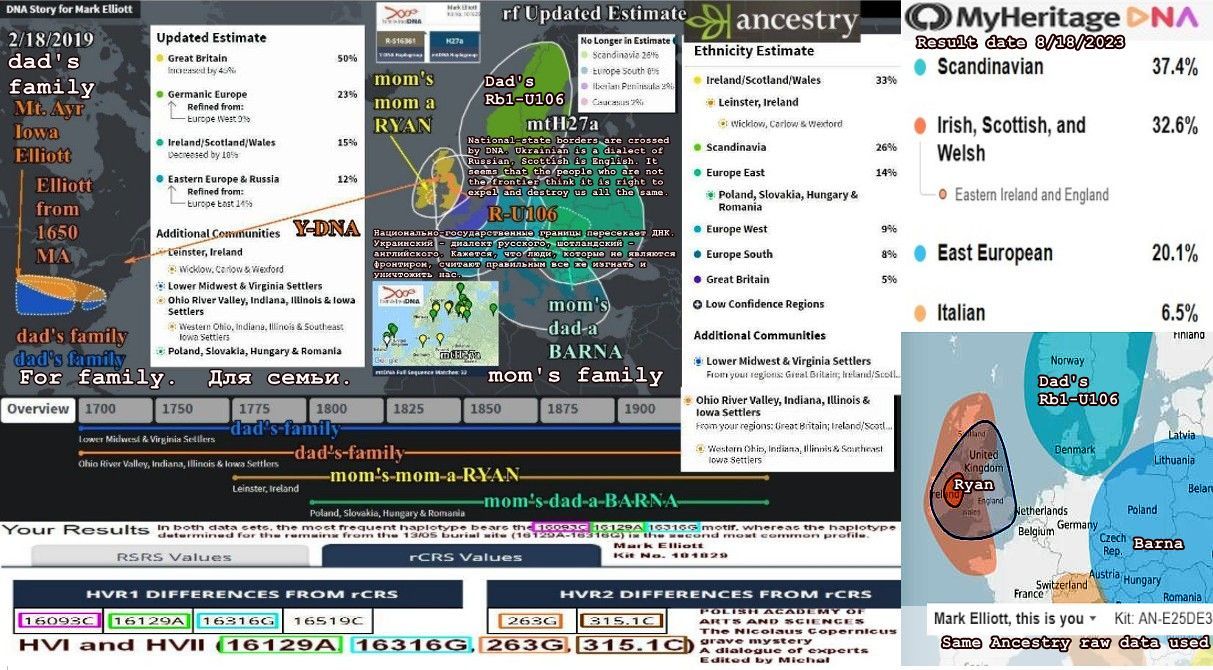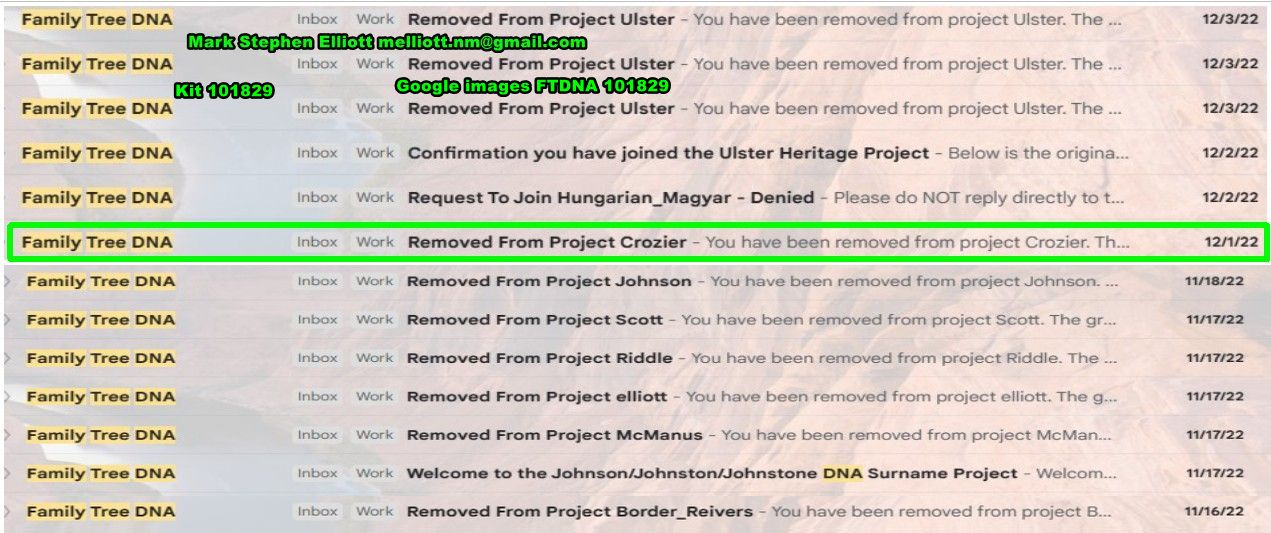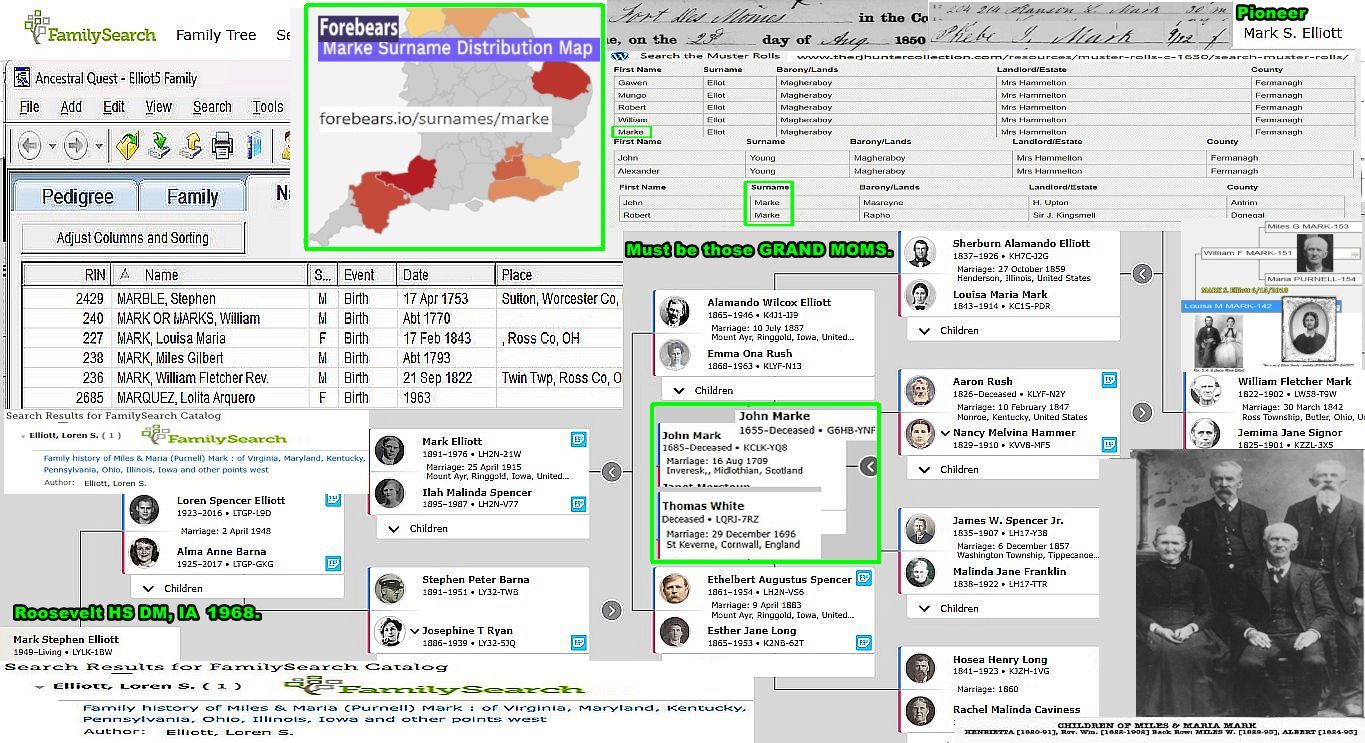*Armstrong Fairbairn (Fairy Bear-Fair Beorn)
Chronicles of the Armstrongs; : Armstrong, James Lewis : Free Download,Elk head and antlers
For making corrections to site;
by Mark Stephen Elliott son of Loren Spencer Elliott
WikiTree
Your user name or IP address has been blocked by a WikiTree Leader.
https://www.wikitree.com/wiki/Category:Clan_Elliot
Start of block: 21:01, 14 May 2018
Intended for: Elliott-11757
Suspected violation: Intentionally adding false information
Though they kicked me off site;
Uploads from Mark Stephen Elliott on Wikitree
ancestors familysearch.org Daniel Elliot 1637-1704?
https://commons.wikimedia.org/wiki/File:Clan_member_crest_badge_-_Clan_Crozier.png
Published on Jul 27, 2019
British Prime Minister Boris Johnson cautioned the European Union that the Irish backstop, which he said was undemocratic, needed to be ditched if they were to strike a Brexit divorce deal. He has repeatedly warned that if the EU continues to refuse to renegotiate the Withdrawal Agreement agreed by his predecessor, Theresa May, then he will take Britain out without a deal. His biggest demand is that the most hotly contested element of the Brexit divorce agreement – the Irish border backstop – be struck out of the Withdrawal Agreement, a demand that has angered Ireland and perturbed other EU capitals. ‘If we get rid of the backstop, whole and entire, then we are making a lot of progress,’ Johnson said, when asked if it is was only the Irish border backstop that he wanted changed.
In 1607 my family as a supporter of Catholic Queen Marie Stuart of Scotland, exiled from both kingdoms the Union of the Crown, which exiled or extermination of the Armstrong and Elliott from the borders is represent by the Union Jack. The
Elliott along with the Armstrong, by supporting Charles II, and the local Catholic population as Royalists we fought against Cromwell then transported as slaves to the American Colonies. Charles II, did become king, which today is a better government then their continuence of a genocidal policy of getting rid of the backstop. These Armstrong and Elliott of County Femanagh, Ireland no longer need a border of violence rapped around them.
In 1776 family rebelled in America against such a government, and now I truly understand why. Prime Minister Johnson, would understand why also if his name was instead spelled Johnston.
Sincerely Mark Stephen Elliott
Chronicles of the Armstrongs; : Armstrong, James Lewis …
The History of Liddesdale, Eskdale, Ewesdale, Wauchopedale and the Debateable Land:
By Robert Bruce Armstrong, Volume 1

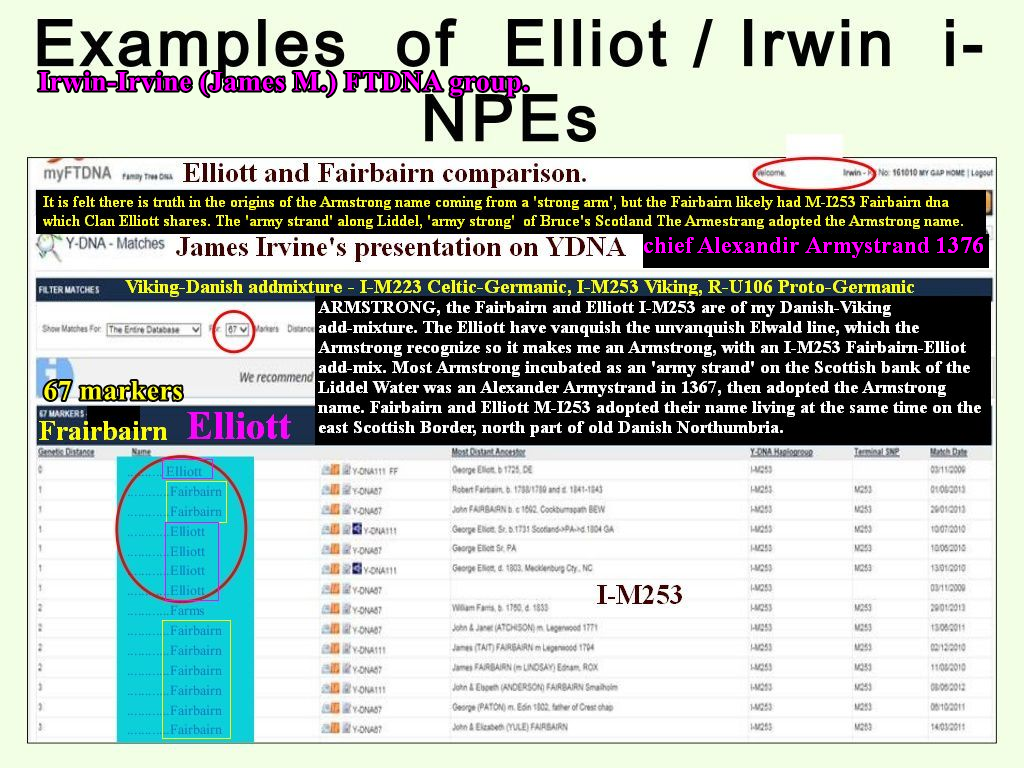
Where did the Fairbairn come from?
Although there is more than one story about the origins of the Fairbairns, perhaps one of the most widely accepted is the saga of Siward.The Viking, also known as Siward Fairbairn of the Strong Arm.Siward was the son of a Danish King and lived in England from about 995 till his death in 1056.In those days, the ruler of any small territory was a king, so exactly where his father, Hringo, King of Upland, also known as Earl Beorn, would fall on the yardstick of earthly royalty is not clear; however, at the very least, he would be considered of noble birth.
Whether Siward was born in England is also not known for certain.However, he was the first to carry the name of Armstrong and was listed in the History of England as having earned the right to the title of Earl of Northumbria (Northumberland) having been conferred the title by Edward the Confessor.
Siward, the Fairbairn, was said to be of giant-like stature and a strong man, blue-eyed, very fair with light hair and beard.The legend goes that Siward took ship and sailed with 50 of his men from Danemark, arriving at what is today called the Shetland Islands, where he is said to have encountered a dragon which he slew in single combat.Dragons, as most of us know, are mythical creatures which the dictionary states were first defined as a large serpent.He apparently got a kick out of killing serpents, as he put out to sea again and finally landed in Northumbria where he began looking for another one to fight with.Here he met an old man who he thought was his god, Odin, who told him he had already killed the dragon and for him, Siward, to sail southward to the mouth of the Thames river which could bring him to the wealthy city of London (one would think that there would have been plenty of serpents there).The old man then gave him a standard (flag) to carry which signified The Raven of Earthly Terror (Edgar Allen Poe must have read about our ancestor!)He was received by Edward the Confessor, the King of England, with much ceremony and was made many promises if he would stay with the King and help him fight to retain his kinship.
The following story about Siward had endured.One day, as he was leaving the court after an audience with King Edward, he was confronted by Tostig, Earl of Huntington, on a bridge, who insulted him by throwing dirt upon him.Siward took no offense at the time, but on confronting him on his return on the same bridge, the story goes that he decapitated Earl Tostig and carried his head back to the King.The king, being suitably impressed by this brawny warrior with violent tendencies, wisely awarded Siward the Earldom of Huntington in addition to Northumbria.
As Siward’s reputation as a brave and valiant knight continued to increase, so also did the kingdom of Edward continued to be visited by other Danes who held him and his people in much less esteem than did our good Siward.In fact, they became an ever-growing nuisance – arriving by ship and plundering the eastern coast of England.As the most of the havoc they created was located in Westmoreland, Cumberland and Northumbria Counties, some wise soul counseled the King to put Siward in charge of defending this area.White perhaps properly descriptive if not overly flattering, it was reportedly stated that it was best that the little devil should be first exposed to the great devil.
Siward goverened in peace the territory of Northumbria which extended from the Humber River to the Tweed River on the border of Scotland, and was greatly respected and loved by the Northumbrians who were chiefly of Danish extraction (better a danish devil than an English saint?). He orchestrated several forays from Northumbria to the north and was successful in putting all territory under the command of the King of England.
The surname of Siward was Beorn (meaning bear) and relates to the Nordic legends of the Fairy Bear or Fay Bairn, from which the Border name of Fairbairn, originated.The name was applied to the stories of Siward and his father and were called the fairy Bear Stories.
Siward had a sister (who’s name is not known) who married Duncan, the King of Scotland from 1034-1040 AD.Prior to his death in 1056, Siward suppoeted his nephew Malcolm, the rightful heir, against Shakespeare’s famous King Macbeth of Scotland who had killed Malcolm’s father King Duncan.
By 1070, the Battle of Hastings (1066) was over and England hsd been conquered by William of Normandy.Malcolm III had been on the Scottish throne since the death of Macbeth in 1057 and Siward has been dead since 1056.His first son, Osberne Bulax, was killed in the battle of Macbeth in 1054, some say by the hand of Macbeth, himself.Osberne is also said to have married the daughter of Lady Godiva.Siward’s second son, Waltheof (which means forest thief – nice name!) is alternately in and out of favor with William the Conqueror.For example, his wife, Juditha, is a niece of William and in 1069 we find that King William restored the earldom of Northumbria to Waltheof.However, in 1076 he was betrayed by King William and brought ot the outskirts of Westminister where he was beheaded.
Osberne Bulax had two sons named Siward Barn the Red and Siward Barn the White (Fairbeom).Not much is known od Siward the Red, but it is known that Siward Barn thw White became a refugee and fled to Scotland with many other men of distinguished renown including Edgar, the Atheling, the rightful Kinf of England.
Waltheof left no male descendant.However, Matilda (called Maude), his daughter (after her first husband died) married King David I, the son of King Malcolm of Scotland and his wife Margaret, who was the sister of Edgar the Atheling mentioned above.Both the Scottish and English royalty have descended from Waltheof to the present day.
Malcolm III, the 85th King of Scotland greeted Siward Barn the White (his cousin) with great kindness, and together they fought against William the Conqueor, driving him out of Northumbria.An interesting story apparently involves Siward the White Fairbeorn during a battle against England.During this battle, King Malcolm’s horse was killed under him partially crippling him and young Soward fought his way to the King’s side.Passing his left arm around the King’s body under his arms, he reportedly fought his way with a great Sword through the enemy to a place of safety.For his courageous act he was knighted by the King, given land and a castle on the Scottish border, and from that time on was referred to as the Sword of the Strong Arm (or Armstrong).This was how he and his decendants came to inherit the lands of MANGERTON in Liddesdale.
These lands (shown above), known as the Debateable Land, were disputed for centuries by both Scotland and England.As time went on they were protected by neither nation and, as the Armstrongs were of both Anglo and Danish descent, they were entirely different from the Celtic Clans of Northern Scotland.As a result of blood ties and loyalties not unlike those of the Mafia in Sicily some centuries later, these Clans avenged bolld for blood for centuries.In this environment it is not hard to understand how a reputation for plundering, bloodshed, and violence came to be tied to these marauders of the border lands.
Little is said about the Armstrongs after the building of the Mangerton Tower, probably in 1135.Apparently no Chief was immediately recognized until 1300 when Alexander became the first Lord of Mangerton.Stories abound of the enmity between the Armstrongs and their neighbors the Lodrs of Soulis, after being invited to a feast at his castle.The Armstrong Clan flourished, however, and by the early 1500s, the Laird of Mangerton was able to gather 3,000 mounted fighters.One Scottish king said that while there were Armstrong and Elliots on the Border, Scotland was safe.The Armstrongs were ambassadors, earls, knights, farmers and above all, fighters.For example, Gilbert Armstrong, third son of Alexander, the second Lord of Mangerton, a distinguished clergyman and diplomat was the Conon Moray from 1361 to 1375.In 1363 he served as a Commissioner to England for the ransom of King David II of Scotland who was held as aprisoner in England.In all there were ten Lords of Mangerton from Alexander through Archibald Armstrong who was denounced as a rebel in 1603, deprived of his lands in 1610, and executed at Edinburgh.
What happened to change our fortunes so greatly ? James IV of Scotland was on good terms with the Scottish Border chiefs and he regularly visited and was entertained by them.His son, James V of Scotland, on the other hand, ruled by decree from distant Edinbaugh and did little to protect his Border subjects or support them against repeated English incursions.In fact, in 1530, James V, with some 8000 men at arms surged into the borderlands and the betrayal of the Armstrongs began.Johnnie Armstrong, Laird of Gilnockie, was a much beloved nad highly respected member of the Armstrong Clan, who James V invited to parlay.Accepting the King’s invitation, he and 50 of his men went to meet with the King in good faith.Instead, they were seized and summarily executed.This incendiary act outraged the Armstrongs and their allies and set the Borders ablaze with rage and indignation – increasing the violence and bloodshed it was intended to suppress.At the prodding of the King, the Church also entered the fray and the Armstrong’s and other Border reivers were cursed by the Church excommunicated enmasse.The Armstrongs, with other Borderers, were thus left to their own devices so far as mutual self-defense was concerned.
Receiving neither aid nor comfort from the Scottish or from the English Crowns, the Armstrongs and other Border clans were forced to become makers of their own laws and protection.After Edward I of England slaughtered a thousand of Scots at Berwick, self-defense and preservation became their paramount endeavor.The Borderers were forced to become the best in what had become a profession – a greater thief (raider) did never ride was one complimentary description of an Armstrong.Jock O’Syde, in Liddesdale.They would raid by night and attend Carlisle Market by day, greeted by all who knew them.Unable to do more than bare subsistence farming, the cupboard was frequently bare.When the lady of the house served her Laird a pair of spurs on a plate, this meant it was time to ride and raid the other side of the Border yet again.
The bloodshed and violence continued.In 1603, Elizabeth I died and James VI of Scotland (James I Of England) was declared her heir.After a splendid coronation at Westminister Abbey, James settled down to life at the English Court.One of his highest priorities was the suppression of the Border families like the Armstrongs, as he was afraid that their incursions would make him unpopular in England.As a result, he established powerful landlords in the Debateable Land around Liddesdale and Eskdale, and appointed Sir William Cranston to put to death all within two miles of the border.A large number of Armstrong reivers were tortured and hung at the Market Cross in Edinburgh, at Carlisle and no doubt on a number of local gibbets.The last Armstrong raid of any importance took place in 1611 and for it, Lance Armstrong of Whithaugh – along with others – was executed a year later.Cranston generated the first forced migrations to Ireland and the subsequent Undertaking of the Plantation of Ulster in 1608.In the 18th century, farms were merged and more migrations followed.
The Armstrong lands of Mangerton passed into the hands of the Buccleuchs.Many members of the once powerful Armstrong Clan were shipped off to Ireland, including Johnnie Armstrong’s grandson, William who settled in Fermanagh.Thus, many who had survived found themselves on the Solway shore waiting for emigrant ships to take them from an inhospitable homeland.Homeless, leaderless, and sometimes penniless, they went westward to Ireland and North America, and south to Australia and New Zealand in search of new beginnings.Perhaps the most famous descendent of the Fermanagh Armstrongs was Neil Armstrong, the Americam astronaut and the first human to set foot on the moon during the Apollo 11 mission in 1969.
The dissolution and dispersal of the Armstrongs followed some two hundred years of Border brigandage and treachery, ending in the depopulated areas and vast estates of the present day Whithaugh, Mangerton and Gilnockie, which had at one time been the Clan’s greatest strongholds.A proud and courageous family had been reduced to a smattering of broken men.The Armstrongs have been scattered and now have neither chief nor recognized leader.However, as individuals the Armstrongs have survived and have lived up to their clan motto of ” Invictus maneo “or” We Remain Unvanquished. ”
P.S. According to recent DNA Testing, The Armsrongs are not related to the Fairbairns. This is according to Lorna Henderson. Someday we will have our own clan, without being part of the Armstrong clan.
Robin Hood is sometimes said to be the Earl of Huntington. Perhaps he is the son of The Fairbairn Earl of Huntington by another woman. I have found evidence online to support this theory.
Tom Fairbairn
FTDNA Yorkshire transfer of information;

 Mark Elliott
Mark Elliott
 Mark Elliott
Mark Elliott













 Mark Elliott
Mark Elliott


























































